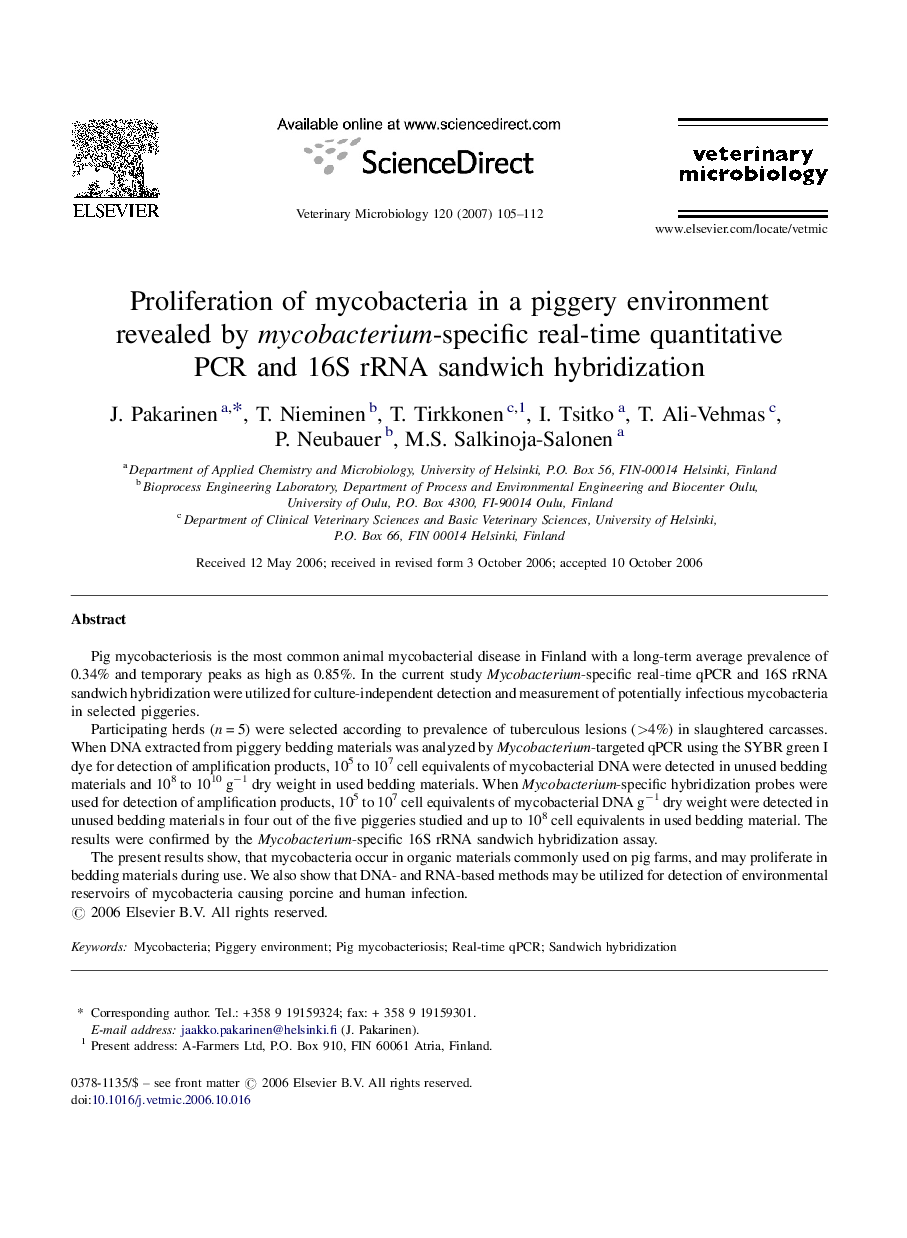| Article ID | Journal | Published Year | Pages | File Type |
|---|---|---|---|---|
| 2469357 | Veterinary Microbiology | 2007 | 8 Pages |
Pig mycobacteriosis is the most common animal mycobacterial disease in Finland with a long-term average prevalence of 0.34% and temporary peaks as high as 0.85%. In the current study Mycobacterium-specific real-time qPCR and 16S rRNA sandwich hybridization were utilized for culture-independent detection and measurement of potentially infectious mycobacteria in selected piggeries.Participating herds (n = 5) were selected according to prevalence of tuberculous lesions (>4%) in slaughtered carcasses. When DNA extracted from piggery bedding materials was analyzed by Mycobacterium-targeted qPCR using the SYBR green I dye for detection of amplification products, 105 to 107 cell equivalents of mycobacterial DNA were detected in unused bedding materials and 108 to 1010 g−1 dry weight in used bedding materials. When Mycobacterium-specific hybridization probes were used for detection of amplification products, 105 to 107 cell equivalents of mycobacterial DNA g−1 dry weight were detected in unused bedding materials in four out of the five piggeries studied and up to 108 cell equivalents in used bedding material. The results were confirmed by the Mycobacterium-specific 16S rRNA sandwich hybridization assay.The present results show, that mycobacteria occur in organic materials commonly used on pig farms, and may proliferate in bedding materials during use. We also show that DNA- and RNA-based methods may be utilized for detection of environmental reservoirs of mycobacteria causing porcine and human infection.
